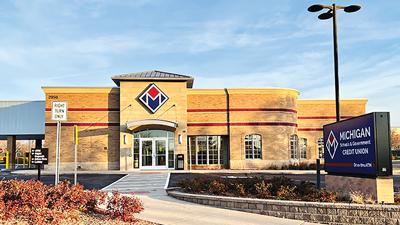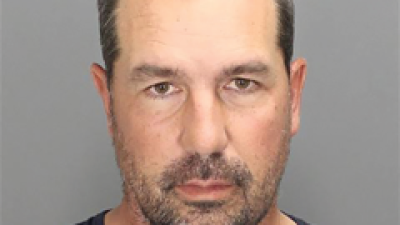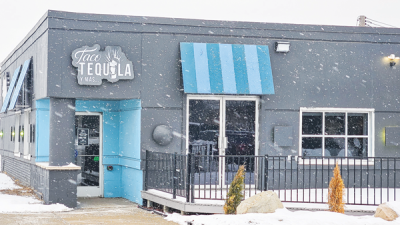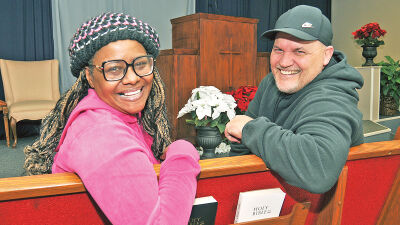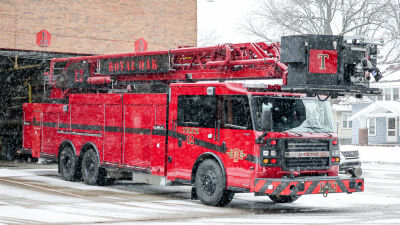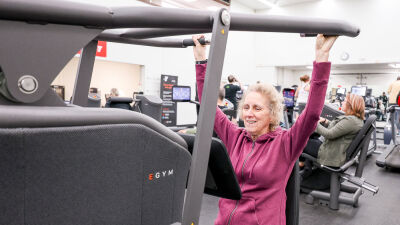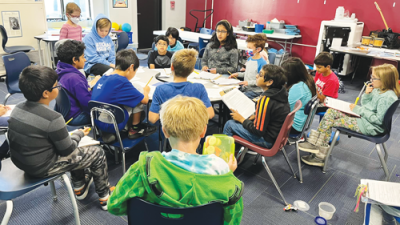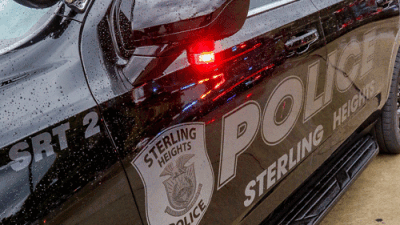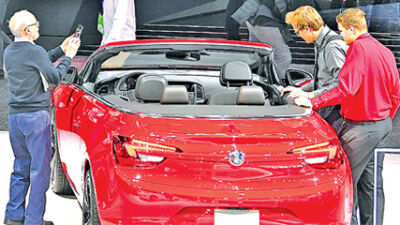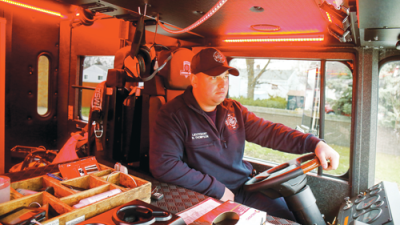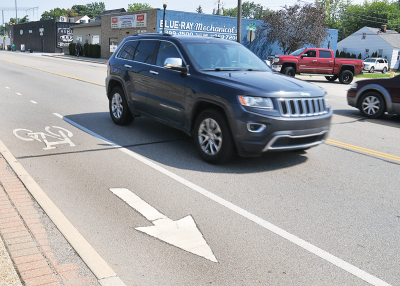
An example of a shared lane marking, or “sharrow,” denoting bike lanes on south John R Road near the Eastern Palace Club. Similar sharrows are being installed along the north end of John R Road as the road diet continues.
Photo by Liz Carnegie
HAZEL PARK — A “road diet” installing bike lanes and other safety features along John R Road, from Hazelcrest Place to 10 Mile Road, is on track to finish this fall.
The project includes pavement markings called shared lane markings (SLMs), or “sharrows,” which denote bike lanes on the roads. The sharrows are also all along Woodward Heights Boulevard. In addition, the project has made pedestrian and accessibility enhancements at the intersection of John R Road and Woodward Heights Boulevard.
“This will benefit our residents and businesses, and visitors will better appreciate our town,” said Mike Webb, the mayor of Hazel Park. “We’re not just a bypass for I-75. We’re a small town by a big city, and we have a lot to offer.”
A stretch of John R Road south of Nine Mile Road underwent a similar transformation in 2019, which led to a moderate surge in the number of businesses that opened along that portion, said James Finkley, the planning and community development director for Hazel Park.
“Overall, road diets help us get closer to ‘complete streets’ that are safer and more accessible for all users,” Finkley said via email. “Some of the potential benefits of this specific lane reconfiguration include traffic calming, fewer lanes for pedestrians to cross, and more separation between motorists, cyclists and pedestrians.”
Federal funds from the Transportation Alternatives Program (TAP) were used for the project. Actual implementation has been handled by Hennessey Engineers and PK Contracting. The project has been in the works for more than four years, experiencing a delay due to the state’s construction work on Interstate 75.
A moving convoy has been used to install the sharrows. According to the National Association of City Transportation Officials, sharrows help legitimize bike traffic on streets, provide guidance on proper positioning for cyclists, and also serve as another form of directional and way-finding guidance for cyclists and motorists alike.
At the intersection of John R Road and Woodward Heights Boulevard, the east side was closed June 10, and then the west side was closed June 25. Both fully reopened on July 8. All concrete work was completed July 31. Now, the overall project is slated to finish Sept. 13.
“This has already been very successfully implemented on south John R, which gave us the opportunity to work out some bugs in the system,” said Hazel Park City Councilwoman Alissa Sullivan. “The road diets we’re implementing are part of place-making, where you increase the places people can actively enjoy their community.
“In this case, we’re increasing walkability and overall safety by slowing down traffic and driving intentional traffic to our community,” she said. “We’re promoting new businesses and existing ones, and we’re improving visibility for any nonmotorized traffic with higher visibility walkways, pedestrian islands and curbs that are ADA (Americans with Disabilities Act) compliant. All of this improves safety for everyone — including motorists.
“We’ve heard the same concerns then that we hear now, where people are worried about traffic backup and the flow of emergency services,” Sullivan added. “Those are legitimate concerns, but we have data from our surrounding communities and years of implemented road diets across the nation that show those aren’t issues that will affect our community in any way. Sure, there are always some growing pains when traffic patterns change or construction occurs, but those are expected. We have faith in the studies presented to us, which say this will make us safer and more inclusive.”
 Publication select ▼
Publication select ▼
